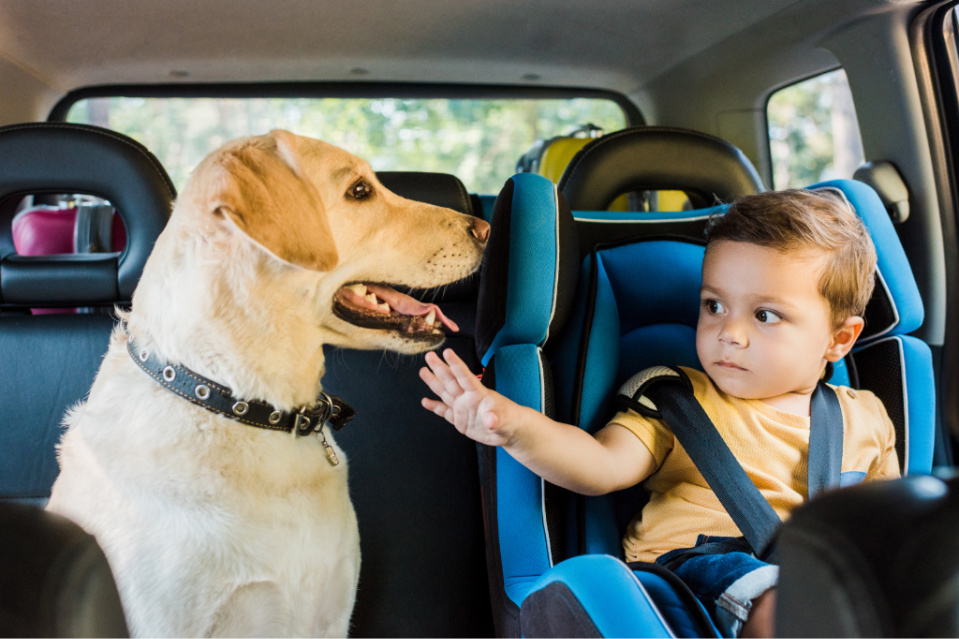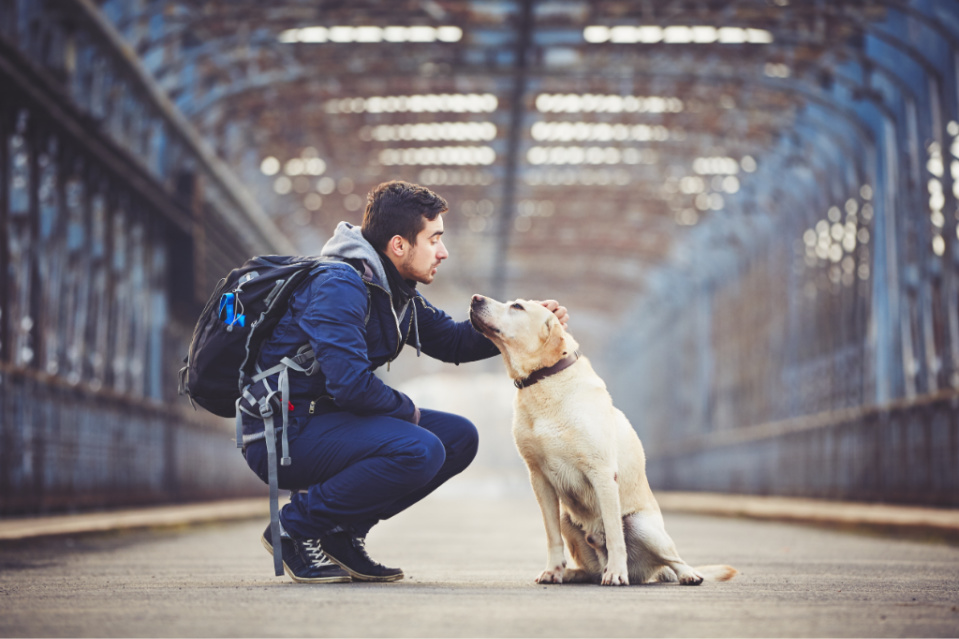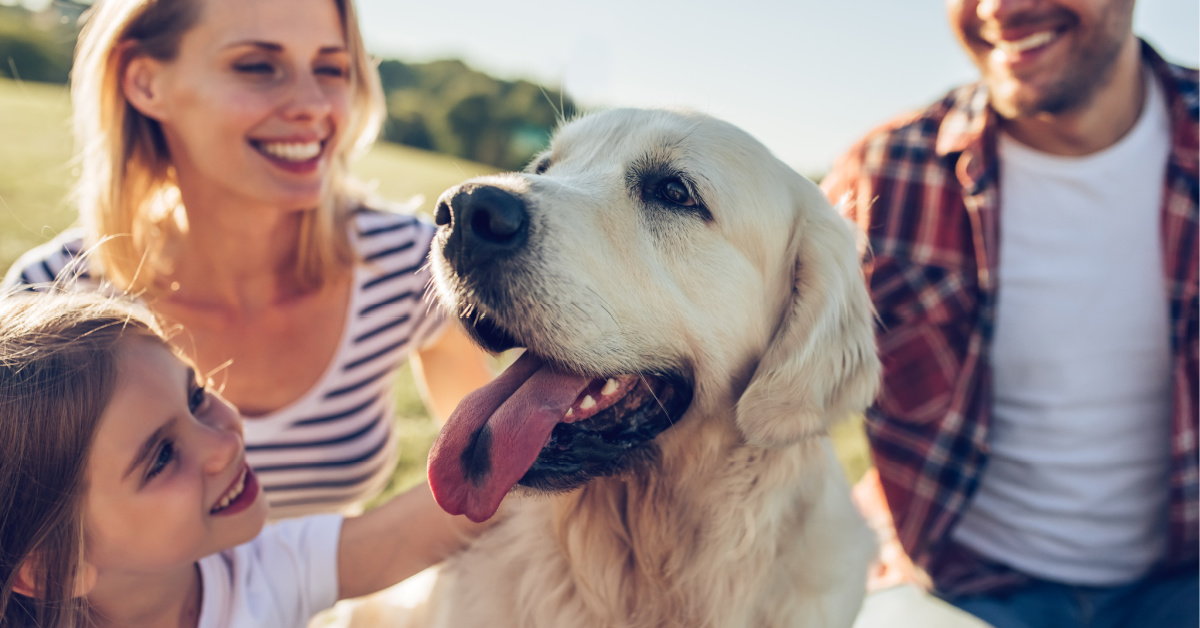Labrador Retrievers are known to be lovable pets and great dogs. They are even more popular as one of the best family dog breeds and for being good with children.
However, it takes training for a Labrador to become a good family pet. Dogs do not have a natural affinity to know what and how to act in a family.
That said, training your Labrador to be a family dog is incredibly important, especially when there are children around. For your Lab to play around safely, you need to instill in them good manners.
Why are Labradors one of the best family dogs?
Before we talk about how exactly to train your Lab, let’s discuss first why they’re such great family dogs and why they’re so popular with children.
1. Gentle

Labradors are known for being very gentle breeds. Your kids can play with them without fear of anything aggressive happening. Many Labrador owners would say the same thing.
However, this does not mean that a Lab cannot get aggressive. Proper training is essential to ensure that your Lab stays well-behaved and relaxed.
2. Playful
Being playful is one of the best traits in a Labrador. For families with children, this could be a great thing. Your kids can play with your Lab, thus letting your kids have fun while letting your Lab expend their pent-up energy. This is especially great since this study has concluded that Labrador Retrievers can respond well to play signals given by their owners.
However, it must said that the playfulness of a Labrador is not endearing in all households. Families with elderlies or young kids may not benefit that much from the high energy of a Lab.
If you do not train your Lab well, they might knock over your loved ones and cause injuries.
3. Easy to train and intelligent
Labradors also known for being easy to train. Their trainability is such a huge part of the reason why they are super popular dogs. Being easy to train, this makes them more appealing in terms of being house pets since they can adjust fairly quickly to domestic life.
Along with their gentleness and playfulness, Labradors are also incredibly popular for being people dogs. They are friendly and are able to socialize better than most breeds. They can easily introduced to other people, and the chances of them acting aggressively are slim.
How to train your Lab to be a family dog
Before a Labrador becomes the coveted loving and playful dog that many families want, they need to trained.
Keep in mind that dogs will act like dogs, so it is an unrealistic expectation to want your Labrador Retriever to automatically act like it is trained or domesticated. It takes a conscious effort on the part of the owner to instill good manners and house training into the Lab.
Training is best done within the first 6 months of the Lab’s life. This ensures optimum understanding in your pup before they get older and learn more bad habits that will be difficult to correct.
Here are some useful tips in training your Labrador pup to be a family dog:
1. Start early.
Starting as early as 8 weeks old is ideal in house-training your Lab. From the very first moment that they enter your house, you should start to them used to the surroundings and slowly make them understand how a dog would act in a household.
Potty training is the first order of business. It will take time and attention, but you should have your puppy potty-trained as soon as you can. Not only will this be good for you, but it will also save you a lot of time in the future in cleaning up the mess they leave behind.
2. Crate-train them.
Crate training is a pet owner’s personal choice. However, there are undeniable benefits that any Lab owner can gain from crate-training their dog.
For one, it assists heavily with the potty training and house training process. It also teaches your Labrador the value of space and how they can have their own should they want it.
Getting your Lab used to a crate will also bring you a lot of convenience down the road. Transportation to anywhere―from the vet to a beach trip―will become much easier with a crate than without.
Something very important that you should take note of, however, is that a crate is not supposed to punishment for bad behavior. Punishments in training are generally looked down on because you are not supposed to train your dog what not to do. Instead, you should show them how you want them to behave.
If you’re looking for ideas on which dog crates to choose for your Lab, you may find some suggestions here.
3. Obedience training

Obedience training from a very early age will make your dog’s domestic life easier. That way, they are able to follow your simple cues without you having to repeat it over and over. An obedient dog is a good dog.
Remember, though, that obedience training is not for you to exercise full control of your pet but to guide them. It could be an unfamiliar situation that you need to guide them through or just following day-to-day rules in the house. Whatever it is, you will find that obedience training is a priceless asset.
4. Monitor your Labrador’s progress as a family dog.
If you think that training your dog will take a short time, think again. For your training to effective, it has to continuously reinforced over time. You can’t teach your dog how to sit or stay without constantly applying it in their daily life.
It will be time-consuming and difficult, especially in the early days of training. A puppy in itself already needs to paid close attention to most of the time since they are still getting the hang of the house. Training a puppy is tough work that will eat up your time, but it’s necessary, and the results of your constant effort will be more than worth it.
5. Give them love and attention.
Labradors are a very energetic breed. If they not given a lot of attention, their energy will remain pent up, and they could lash out destructively.
This doesn’t mean that they’ll start aggressively attacking people, only that they may resort to chewing. And that’s going to be terrible for your furniture or shoes.
Ensuring that your Lab gets the proper exercise and play will help them live a happier home life. Owning a Labrador means keeping up with all their needs, so you have to stay committed.
If you’re considering improving your relations and bond with your Lab, you may also find some recommendations in this post.
6. Positive reinforcement
Punishing your dogs for bad behavior is not as effective as it was thought to be.
One study looked into this and concluded that positive reinforcement is the best way to go in training dogs. The idea is that instead of punishing a dog for bad behavior, the owner should instead praise the good work that the dog has done.
Praise training will make your dog understand that good practices are rewarded. This will make them more likely to be obedient or follow your cues. This is good for both you and your Lab because it fosters a relationship built on understanding and care, not punishment and fear.
7. Treat them like family.
Training your Lab to be a family dog is very much a personal journey. You should start considering your Lab part of your family because that is what they are. Since they are now part of your group, your Lab should learn to operate on the dynamics of the family.
Train them in a way that will fit the overall scheme of the family. Some families have very young or old members, so a Labrador might have difficulty adjusting their energy levels. What’s important is that you train your Lab in a way that is customized to your family.
Conclusions
There is no one complete guide to training your Lab to become part of your family. What we can give you are only rough guidelines that you should consider following and not necessarily take as rules all the time. Our advice is helpful, but only if applied in a considerate and loving manner.
Remember that your dog should be loved and cared for and is definitely not an object to be displayed when convenient. The greatest step in training your dog to be family-friendly is to consider them as part of yours. Give them the attention and care that they deserve, and they will flourish.







